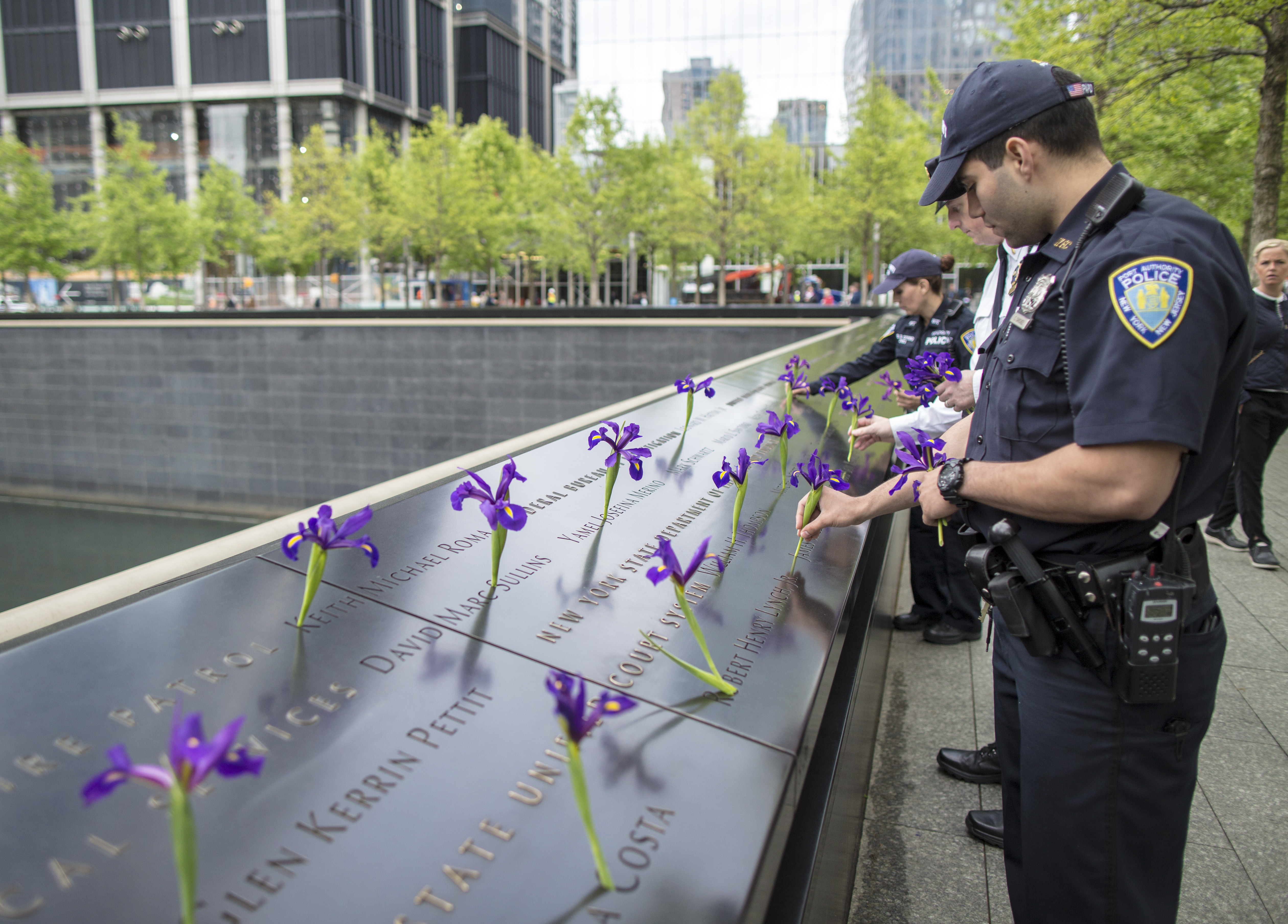After Witnessing 9/11 from His Studio, Michael Mulhern Incorporated It Into His Work
After Witnessing 9/11 from His Studio, Michael Mulhern Incorporated It Into His Work

On the morning of Sept. 11, 2001, artist Michael Mulhern was diligently working on his new series of paintings titled "Ash Road" in his studio apartment of 23 years at 125 Cedar Street. Because of the raw metallic pigment present in his medium, the artist wore goggles and a respirator as he painted that morning.
He watched from his ninth-floor studio as the planes struck the Twin Towers and witnessed their collapse. The impact of the collapse shattered his apartment windows. Glass, smoke and debris filled the room. The painter evacuated the building, grateful for his safety equipment as he encountered smoke and air contaminants.
When Mulhern returned to his apartment days after the attacks, he found his home destroyed and full of debris. He salvaged 150 canvases from his studio by vacuuming the dust and wiping them down with turpentine solution.
Distraught, he turned to his craft for solace. The "Ash Road" series title took on a whole new meaning as Mulhern observed his studio caked in dust and the streets of Lower Manhattan coated with ash.
Dust blew onto his art supplies and even in his paint. Mulhern chose to incorporate this contaminated paint into his series for both its texture and symbolism. The paintings seemingly absorbed his own experience of personal turmoil and dislocation.
Mulhern painted the canvases on the floor by pouring the dust-filled black, white, gray, and aluminum paint onto the work, in the fashion of Jackson Pollock. Patterns emerge out of the layers of paint.
He explored the gray color field and its tonalities by using the tricky medium of aluminum paint for almost the entire span of his 40-year career. Despite the monochromatic palette of his work, the paintings give off tremendous power and potency.
Their style resembles the chaos of that fateful Tuesday, as Mulhern told The New York Times, "It's kind of like that day when I was wondering, 'Was it really a car under all that or not?' Is this the street or part of a building?" Layers of gray paint obscure lines and patterns, much like the layers of dust blanketed lower Manhattan for months after September 11th.
Mulhern moved back into his studio 16 months after the attacks and felt the effects of 9/11 both inside and outside his apartment. Office workers from 4 World Trade Center were once able to watch him paint; now he looked out to devastation.
After looking out onto the World Trade Center site for 23 years, it was difficult for the artist to take in his new view of Ground Zero. "Every time I look at this, it has no relation to what was there before," Mulhern told The Dispatch of Lexington, North Carolina. "It's just a construction site, just a very base construction site."
Mulhern completed the "Ash Road" series in 2003. He died in 2012 from dementia that was exacerbated by the trauma and displacement caused by 9/11.
Two works from Mulhern's "Ash Road" series are now on view in the Rendering the Unthinkable: Artists Respond to 9/11 exhibition at the 9/11 Memorial Museum.
By Emily Edwards, Collections and Exhibitions Coordinator
Previous Post
Behind the Lens: 360-Degree View of the World Trade Center

In this series, 9/11 Memorial & Museum staff photographer Jin Lee shares his view of select photographs taken on the site.
Next Post
Photos: Officers Place Flowers on the Parapets to Mark National Peace Officers Memorial Day

Members of the New York City Police Department and the Port Authority Police Department placed flowers Monday morning on the 9/11 Memorial bronze parapets on the names of officers killed on 9/11.